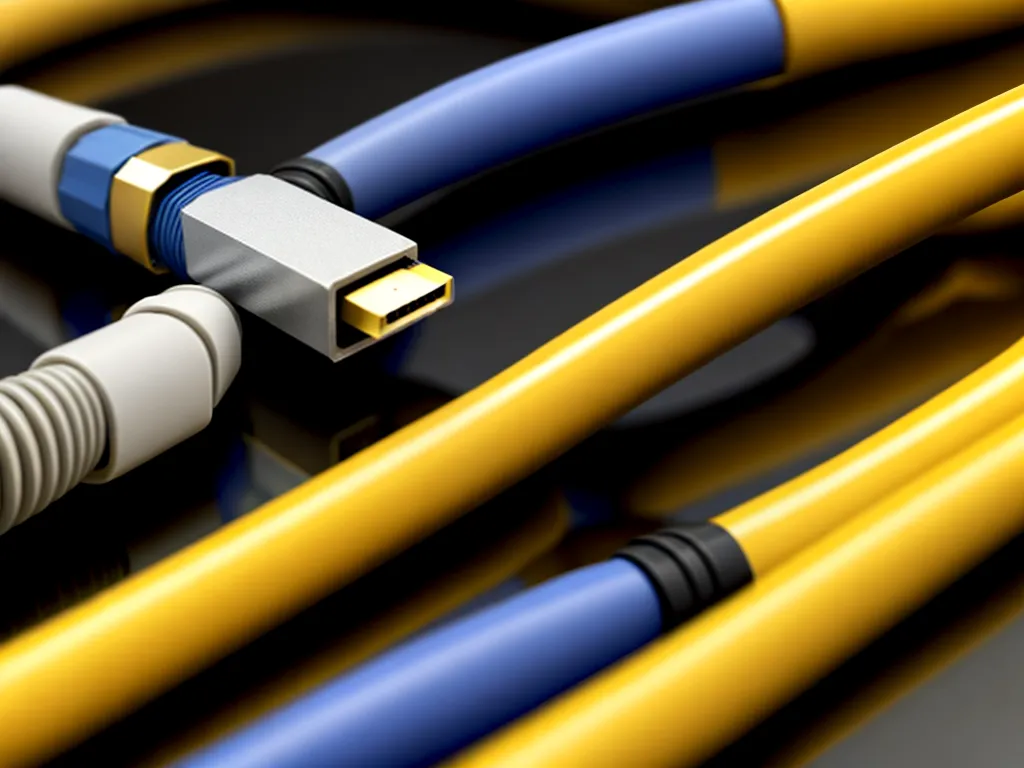
Avoid Misuse of Nonmetallic Sheathed Cables
Introduction
Nonmetallic sheathed cables, commonly known as Romex cables, are very convenient and commonly used for wiring homes and buildings. However, like any electrical component, Romex cables can be dangerous if improperly installed or used in ways they are not designed for. In this article, I will cover the proper and safe use of Romex cables, as well as hazards to avoid.
What are Nonmetallic Sheathed Cables?
Nonmetallic sheathed cables, also called NM cables or Romex cables, are electrical wires surrounded by flexible plastic insulation. Romex cables contain two or more insulated conductors and an uninsulated ground wire. The plastic insulation allows Romex cables to be more flexible and easier to install compared to metal conduits.
Some key features of Romex cables:
- Made of copper or aluminum conductors with PVC insulation
- Contain a bare copper ground wire for safety
- Surrounded by a plastic protective jacket
Romex cables come in different sizes based on the wire thickness, or gauge, and number of conductors. Common examples are 12/2, 12/3, 14/2, and 14/3. The first number refers to the gauge and the second to the number of insulated conductors.
Proper Uses of Romex Cables
When used properly, Romex cables provide a safe and convenient wiring method. Here are some appropriate uses of nonmetallic sheathed cables:
Permanent Wiring in Walls, Floors, and Ceilings
One of the main uses of Romex cables is for permanent branch circuit wiring through walls, floors, attics, and crawlspaces. When installed correctly and protected, Romex can safely supply power to outlets, switches, and fixtures in homes and buildings.
Temporary Wiring with Proper Precautions
For some construction or remodeling projects, Romex cables can also be used as temporary "open wiring" before walls are finished. However, precautions such as GFCI protection, insulation from damage, and restrictions on height and length of cables must be followed.
Low Voltage Applications
In addition to 120V and 240V circuits, Romex cables can be used for low voltage wiring such as doorbell transformers, alarm systems, and landscape lighting. The thinner gauge cables are well suited for these lower power needs.
Hazards and Misuses to Avoid
While very handy, Romex cables also come with risks if improperly installed or used inappropriately:
Exposed Cables Pose Shock and Fire Hazards
Romex cables should never be left exposed or unprotected. The bare ground wire and damage to the insulation can easily cause shocks, shorts, and electrical fires if not properly covered and protected.
Not Approved for Wet or Damp Locations
The PVC insulation on Romex cables can be damaged by moisture and water. Never use Romex wiring in wet areas or expose it to rain or flooding risks during construction.
Not Intended for Inside Conduits or Exposed Outdoor Use
Romex cables lack the protection needed inside conduit or for outdoor exposure to the elements. The sun, water, and temperature extremes can deteriorate the jacketing over time.
Overheating Risks from Overloading and Overlapping
Too many conductors bundled together or undersized cables for the current load can cause excessive heat buildup. This creates a fire hazard and can damage the Romex insulation over time.
Best Practices for Safe Use
Follow these guidelines to safely use and avoid misuse of Romex cables:
-
Use proper gauge cables for the size of electrical loads. Overloading leads to overheating.
-
Never staple or nail through cables as this can damage the insulation. Use plastic cable straps instead.
-
Only make connections in covered electrical boxes, not exposed conductors.
-
Avoid running Romex across floors or through high traffic areas where it can be damaged.
-
Label and organize Romex cable runs neatly to prevent overlapping and overheating.
-
Protect cables from physical damage by studs, insulation, etc when run through walls.
-
Keep all Romex wiring at least 6 inches from insulation or use special NM-B cable to prevent overheating fire risks.
Conclusion
Romex cables provide an inexpensive and flexible way to wire many buildings when properly selected and installed. However, like any electrical work, care must be taken to use them only in approved ways and protect against physical and moisture damage. Following codes and best practices avoids the serious shock, fire, and overheating dangers from misusing nonmetallic sheathed cables. With increased diligence and safety, Romex can be used effectively to distribute power.